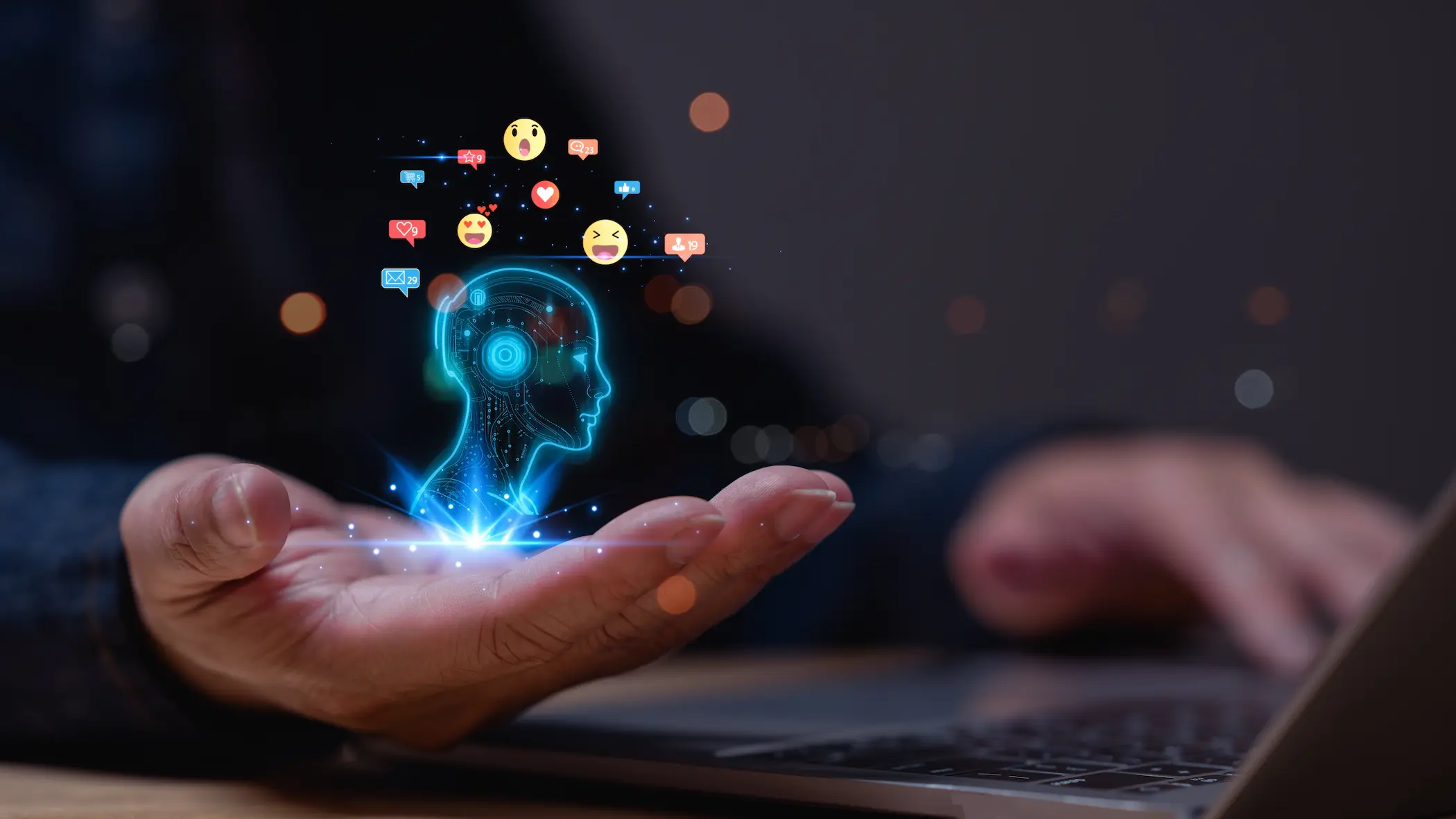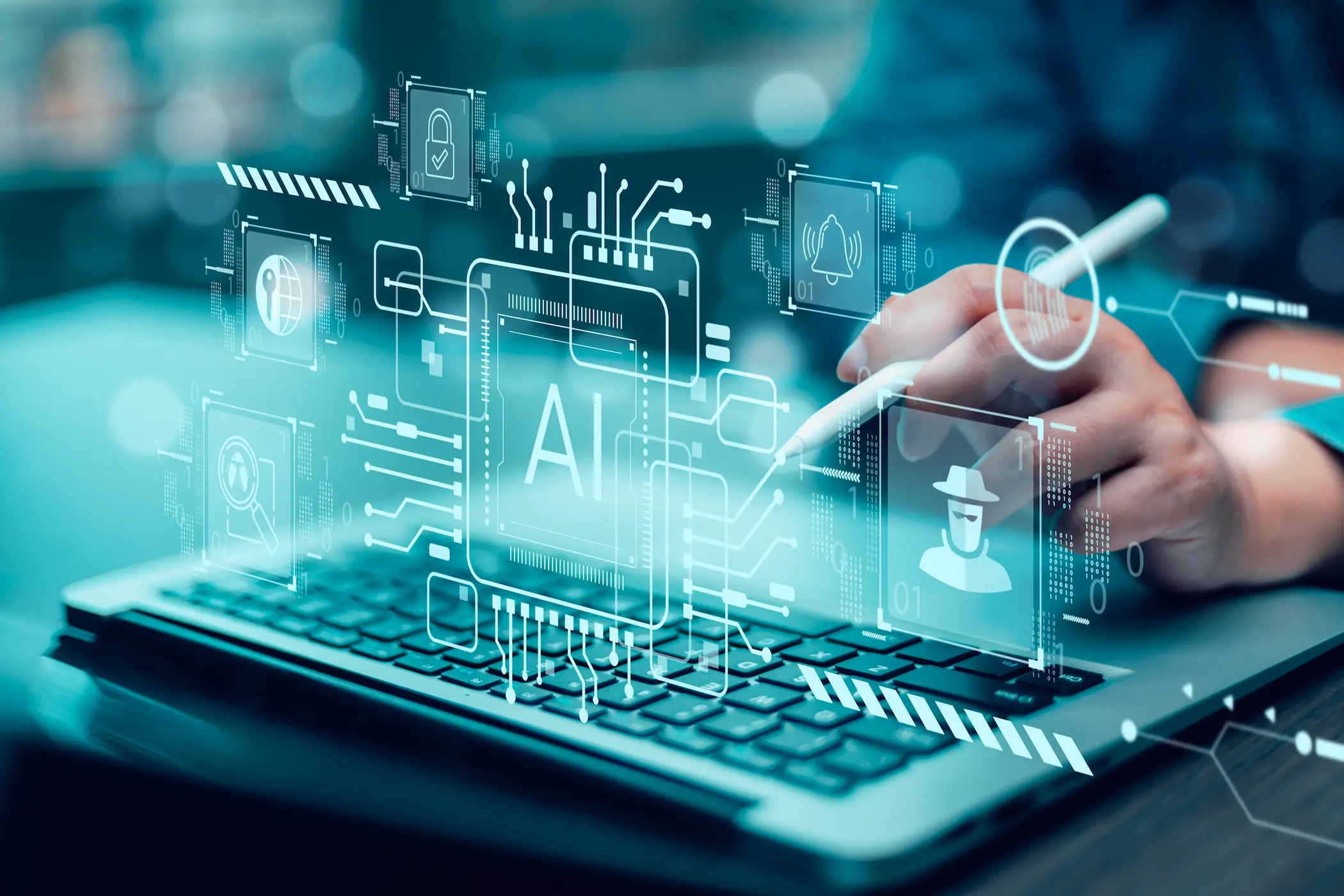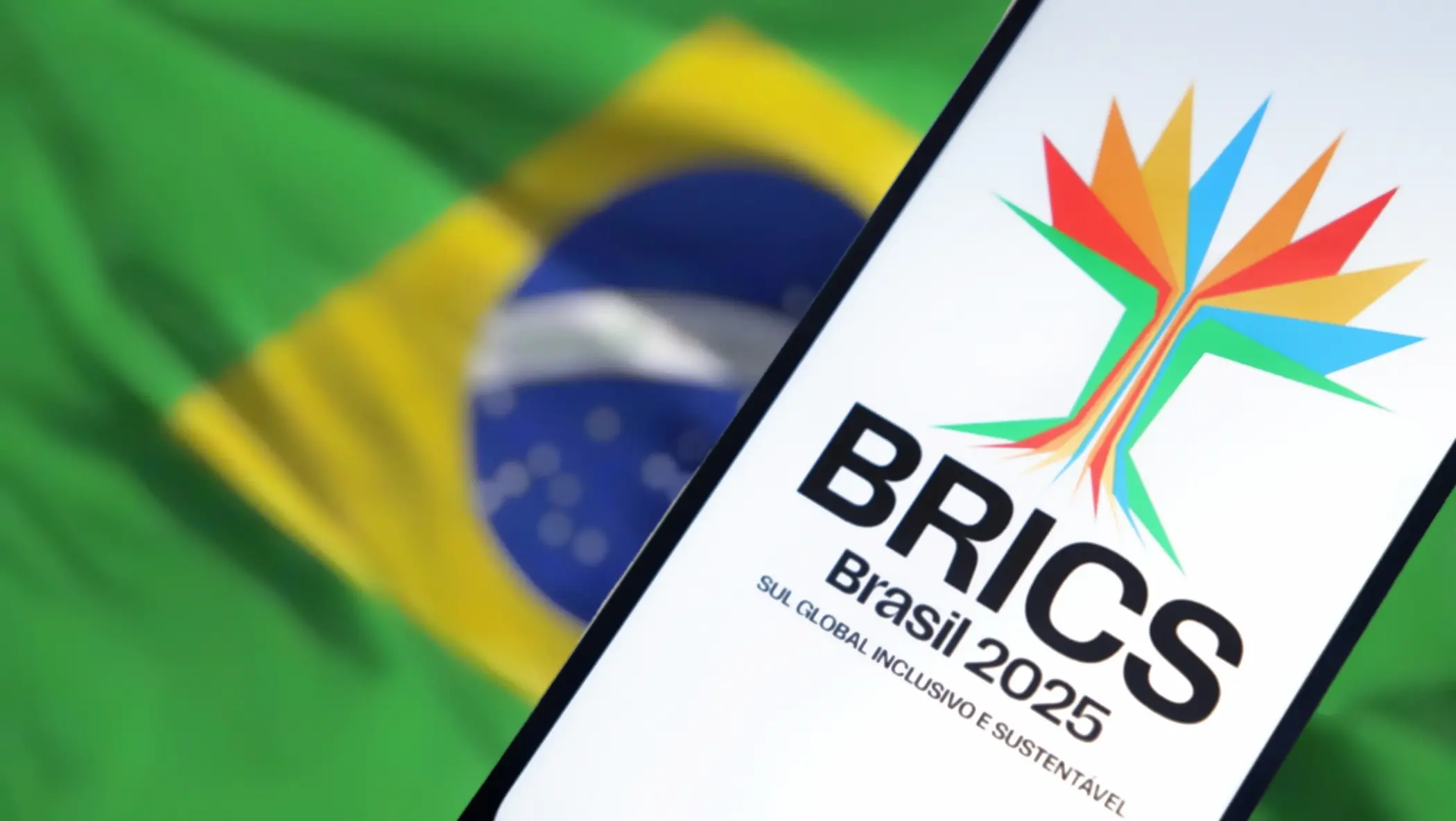Simulation technology is witnessing a profound transformation with the emergence of Digital Cognitive Twins (DCTs), the next generation of Traditional Digital Twins (DTs). These advanced systems go beyond conventional monitoring functions, integrating sophisticated AI models, particularly machine learning networks and natural language processing (NLP) techniques.
This convergence grants DCTs complex capabilities, enabling them to perform autonomous decision-making, conduct real-time self-optimisation, and develop predictive and anticipatory mechanisms. As a result, this technology is reshaping key sectors across multiple domains. In Industry 4.0, it enhances the efficiency and resilience of logistical supply chains; in urban governance, it enables the intelligent management of resources with exceptional accuracy; and in the healthcare sector, it accelerates the adoption of precision medicine tailored to the individual.
The exceptional performance of these systems depends on their ability to absorb and aggregate vast datasets, comprising thousands of variables for a single individual. These datasets extend well beyond the conventional boundaries of personal information, encompassing biometric inputs, genomic data, clinical records, and continuous monitoring of behavioural and psychological patterns derived from digital interactions.
This aggregation produces human simulation models of exceptional fidelity, a defining feature that places this technology squarely within the dual-use domain. While these models promise vast societal benefits, the compromise or seizure of these composite data repositories would constitute a catastrophic national security threat: the harm arising from the exposure of citizens’ data would be strategic, permanent, and irreparable.
The gravest risk lies in the possibility that state or non-state actors might exploit these datasets. Whereas past influence operations—most notably the disinformation campaigns of the last decade—targeted broad audiences, behavioural models derived from integrated digital-transformation processes enable bespoke cognitive-warfare interventions at the level of individuals or small groups. This capability transcends conventional geopolitical forecasting, enabling real-time prediction of societal behaviour.
At the core of the threat is the capacity to selectively manipulate these datasets or even fabricate synthetic records to engineer a pretext for intervention. By corrupting cognitive models, an adversary can simulate a manufactured state of public unrest, precipitate mass psychological collapse, or stage apparent systemic institutional failure—thereby manufacturing a spurious justification for political, economic or security interventions.
The Evolution of Simulation: From Digital Twins to Cognitive Models
DTs established the foundational concept of a virtual counterpart mirroring a physical entity, whether a complex industrial apparatus or an extensive infrastructure system. The core function of these twins is to monitor, represent, and simulate the real-time condition of their physical originals. Consequently, these models primarily provide descriptive and diagnostic insights, yet they generally lack the mechanisms for autonomous decision-making or the ability to execute complex, pre-emptive interventions.
To bridge this functional gap in decision-making capacity, DCTs emerged, integrating advanced cognitive capabilities through the convergence of AI, machine learning, and sophisticated computational techniques. These twins are fundamentally characterised by their ability to learn from data, reason through complex scenarios, anticipate future outcomes, and act accordingly, thereby transcending the limits of replication and passive observation. This transformation enables the shift from reactive monitoring to proactive optimisation of operations.
A central component of DCTs lies in their exceptional capacity to model human thought and behaviour. This trajectory depends heavily on Large Language Models (LLMs), employed to simulate individual behavioural patterns. To enhance the accuracy of these simulations, researchers are developing large-scale public datasets that provide a comprehensive and nuanced portrayal of human behaviour.
These datasets assimilate clinical, demographic, and biometric data to construct highly detailed virtual avatars that replicate individual entities with remarkable precision. This multimodal integration encompasses electronic health records, genomic datasets, and real-time sensor data, forming the analytical foundation of next-generation cognitive modelling.
Additionally, DCTs can incorporate novel, non-invasive physiological indicators. These continuously collected data streams, gathered in real-world environments, include speech and language patterns, gait analysis, and eye-tracking data. The resulting models demonstrate potential for building DCTs capable of accurately predicting human behaviour at both the individual and collective levels.
The Strategic Value of AI-Driven DCTs
The shift from reactive healthcare systems to proactive, individualised medicine represents one of the most transformative applications of AI-driven digital twins. These systems continuously collect and aggregate patient data through Internet of Things (IoT) sensors, enabling the early detection of subtle physiological variations that precede the onset of clinical symptoms. This approach allows for diagnosing diseases before clinical manifestation, marking a profound leap in preventive healthcare and redefining the principles of early intervention and precision medicine.
In the field of neurology, DCTs have demonstrated advanced capabilities in risk classification and the design of targeted intervention strategies. By integrating diverse data, these systems can predict progression from mild cognitive impairment to Alzheimer’s disease with remarkable accuracy, typically 81%-90%. This predictive capacity is vital, as therapeutic interventions achieve their maximum effectiveness during the mild-impairment phase.
Moreover, DCTs precise physiological and pathological details of each individual, allowing healthcare specialists to simulate multiple treatment scenarios. These digital models can simulate the effects of various preventive strategies, helping physicians select the most suitable approach for each patient. This process strengthens personalised health education, enhances individual well-being, and significantly supports disease-prevention efforts.
Furthermore, by integrating awareness of geostrategic determinants of health—such as the effects of climate change and resource accessibility—and by applying AI to these datasets, policymakers and clinicians can implement targeted interventions to mitigate emerging mental health risks.
The application of cognitive modelling extends beyond individual healthcare to encompass the optimisation of organisational and societal systems, harnessing data to generate strategic insight. Population and group-level digital models—often referred to as social digital twins—provide policymakers with a crucial capability to test policy interventions before they are enacted in the real world.
By embedding complex datasets within coherent modelling frameworks and employing intuitive visualisation tools, cognitive modelling simplifies access to and interpretation of vast volumes of information, thereby facilitating communication, collaboration, and inclusive participation in policymaking. This simulation capability is indispensable in confronting large-scale societal challenges. The ability to simulate future trajectories, grounded in modelled behaviours and anticipated trends, constitutes a core function supporting strategic foresight and anticipatory governance.
Commodifying Cognitive Vulnerabilities and Their Strategic Consequences
A direct, proportional relationship exists between the functional utility of a digital-transformation model and its corresponding security risk. For a DCT to achieve exceptional predictive capacity, it must, by necessity, aggregate extremely sensitive information, encompassing precise behavioural indicators of cognitive decline and deeply personal psychological traits.
This operational necessity creates an inverse correlation between a system’s functional excellence and a state’s national security: the more accurate and effective a DCT becomes, the greater its strategic value as a target for adversaries. High-resolution profiles of key individuals or targeted population segments can expose specific vulnerability markers, such as genetic predispositions, financial pressures, or psychological biases, effectively transforming the model, once compromised, into a high-precision strategic intelligence asset.
Although distributed data analytics models are marketed as tools for positive outcomes the data streams they generate are, in essence, sophisticated tools for profiling personal traits. When cognitive models predict staff turnover or identify psychological patterns, they are, in reality, detecting and classifying human cognitive and psychological vulnerabilities such as stress susceptibility, financial insecurity, or behavioural bias.
In the hands of the data-owning institution, such high-resolution personal profiles enable administrative and operational optimisation. Yet, in the possession of a hostile actor, they become instruments of precision targeting. Consequently, data itself becomes a strategic resource, allowing intelligence agencies or adversarial states to identify pressure points among key figures in the governmental, industrial, or defence sectors, based on known psychological or emotional weaknesses.
The inherent design principle of DCTs converts any technological failure into an immediate political threat. Cognitive transformation models are increasingly employed within societal-modelling frameworks, such as the construction of digital social twins that simulate population groups, providing policymakers with experimental environments for testing policy interventions.
As these models are prescriptive by nature they must operate in full compliance with regulatory frameworks, data-sovereignty principles, and cooperation protocols. Should the foundational data underpinning a societal digital twin be compromised, biased, or manipulated, the system’s autonomous decision-making capabilities may yield discriminatory, ineffective, or harmful policies against the affected population.
Ultimately, any breach in data integrity or governance translates into adverse consequences for large social groups, amplifying conventional algorithmic-bias risks into state-level governance failures.
The Attribution Challenge and the Risks of Policy Manipulation
The AI systems proposed to counter cognitive warfare raise profound questions about self-determination, privacy, and communication rights. When a covert cognitive attack is executed using insights derived from integrated cognitive-twin models, it is deliberately designed to exploit pre-existing social cleavages and psychological biases. This method renders the resulting political effects—whether social unrest or electoral disruption—seemingly a natural consequence of internal systemic problems.
One of the principal challenges lies in establishing causality and attribution. If an attack based on integrated cognitive-warfare models succeeds, the targeted state faces acute difficulty in proving foreign interference, since the outcome can plausibly be explained by domestic factors such as mismanagement or organic political polarisation. The absence of conclusive empirical evidence affords the aggressor plausible deniability, while the victim state confronts international scrutiny and pressure.
This dynamic reinforces calls for cognitive paternalism, whereby external actors or institutions feel compelled—under the precautionary principle—to intervene in response to perceived instability, even in the absence of clear attribution, thereby legitimising external action and eroding the foundations of national sovereignty.
Digital data-simulation models—particularly social digital twins—are explicitly designed as environments for training strategic policy responses. Such models encapsulate the full spectrum of a state’s anticipated responses to diverse geopolitical, economic, and security crises. If an adversary breaches a policy-testing environment within such a simulation, it acquires two decisive strategic advantages. First, it obtains the comprehensive blueprint of the target state’s expected policy reactions, thereby eliminating strategic surprise. Second—and far more dangerous—the adversary can inject complex, manipulated data streams into the policy-simulation environment.
Because the simulation is engineered to identify and recommend the optimal course of action, corrupted input data will inevitably steer policymakers toward suboptimal—or even catastrophic—interventions during real crises. The optimisation engine, operating on false premises, would drive the state to implement strategically harmful policies, effectively precipitating a national strategic failure through the covert manipulation of its own cognitive-simulation tools.
In conclusion, this technology represents a fundamental turning point in the evolution of decision-making and predictive practices. Its benefits are no longer confined to advancing healthcare innovation or improving institutional performance; they now extend to the redefinition of national security paradigms. The extraordinary rise of artificial intelligence models intersects with a grave strategic challenge: the commodification of high-resolution data on individuals and societies. In this emerging reality, psychological traits and behavioural vulnerabilities have shifted from tools of enhancement to targets of exploitation—and, in some cases, to pretexts for external political or economic intervention.
Furthermore, the adaptive and predictive capacities of digital cognitive twins enable them to shape policy directions and influence societal trends in unprecedented ways. Yet, the fragility of data architectures and the weakness of digital governance mechanisms leave these systems highly vulnerable to manipulation and control on a vast scale. Consequently, the future of national security and the legitimacy of sovereign decision-making will hinge not only on how effectively states harness this technological revolution, but also on how prudently they govern and ethically regulate it — ensuring that it becomes a vehicle for comprehensive progress, rather than a new instrument of domination or destabilisation.
References
سكاي نيوز عربية. “التوأم الرقمي.. نسخة منك تكشف حالتك الصحية مبكراً. ١٧ أكتوبر ٢٠٢٦، تاريخ الاطلاع ٢٢ أكتوبر ٢٠٢٥. متاح على الرابط التالي: https://www.skynewsarabia.com/technology/1827676-%D8%A7%D9%84%D8%AA%D9%88%D8%A7%D9%94%D9%85-%D8%A7%D9%84%D8%B1%D9%82%D9%85%D9%8A-%D9%86%D8%B3%D8%AE%D8%A9-%D9%85%D9%86%D9%83-%D8%AA%D9%83%D8%B4%D9%81-%D8%AD%D8%A7%D9%84%D8%AA%D9%83-%D8%A7%D9%84%D8%B5%D8%AD%D9%8A%D8%A9-%D9%85%D8%A8%D9%83%D8%B1%D8%A7.
A, Adam. “Digital Twins: Secure Design and Development.” National Cyber Security Centre, September 2, 2024. Accessed October 18, 2025. https://www.ncsc.gov.uk/blog-post/digital-twins-secure-design-development
Allem, Nichole. “Digital Twins for Efficient Supply Chains.” Maersk, April 11, 2025. https://www.maersk.com/insights/digitalisation/2025/04/11/digital-twins-for-efficient-supply-chains
Alohaly, Manar. “How Digital Twin Technology Can Enhance Cybersecurity.” World Economic Forum, March 4, 2025. Accessed October 19, 2025. https://www.weforum.org/stories/2025/03/how-digital-twin-technology-can-enhance-cyber-security/
Ash, Maxwell, Emyr Thomas, and Eirini Anthi. “Emerging Technologies and Their Effect on Cyber Security.” GOV.UK, August 7, 2025. Accessed October 15, 2025. https://www.gov.uk/government/publications/emerging-technology-pairings-and-their-effects-on-cyber-security/emerging-technologies-and-their-effect-on-cyber-security
Brueck, Chris, Sebastian Losacker, and Ingo Liefner. 2024. “China’s Digital and Green (Twin) Transition: Insights from National and Regional Innovation Policies.” Regional Studies 59 (1). doi:10.1080/00343404.2024.2384411
Castro, Juan Pablo. “The Need for Digital Twins in Cybersecurity: From Awareness to Anticipation.” Medium, August 14, 2025. Accessed October 16, 2025. https://cybersecuritycompass.medium.com/the-need-for-digital-twins-in-cybersecurity-from-awareness-to-anticipation-2a29b53190dd
Chaparro-Cárdenas SL, Ramirez-Bautista JA, Terven J, Córdova-Esparza DM, Romero-Gonzalez JA, Ramírez-Pedraza A, Chavez-Urbiola EA. A Technological Review of Digital Twins and Artificial Intelligence for Personalized and Predictive Healthcare. Healthcare (Basel). 2025 Jul 21;13(14):1763. doi: 10.3390/healthcare13141763
Fairclough, Caty. “Seeing Double: How Digital Twins Are Advancing the Defense Industry.” Ansys, August 25, 2025. Accessed October 19, 2025. https://www.ansys.com/blog/how-digital-twins-are-advancing-the-defense-industry
Giberna, Marco, Holger Voos, Paulo Tavares, João Nunes, Tobias Sorg, Andrea Masini, and Jose Luis Sanchez-Lopez. “On Digital Twins in Defence: Overview and Applications,” August 7, 2025. Accessed October 21, 2025. https://arxiv.org/html/2508.05717v1
Lahmann H, Custers B, Scott BI. The fundamental rights risks of countering cognitive warfare with artificial intelligence. Ethics Inf Technol. 2025;27(4):49. doi: 10.1007/s10676-025-09868-9
McKinsey. “What Is Digital-twin Technology,” August 26, 2024. Accessed October 16, 2025. https://www.mckinsey.com/featured-insights/mckinsey-explainers/what-is-digital-twin-technology
Mellers B, Ungar L, Baron J, Ramos J, Gurcay B, Fincher K, Scott SE, Moore D, Atanasov P, Swift SA, Murray T, Stone E, Tetlock PE. Psychological strategies for winning a geopolitical forecasting tournament. Psychol Sci. 2014 May 1;25(5):1106-15. doi: 10.1177/0956797614524255
Nichole Allem, “Digital Twins for Efficient Supply Chains,” Maersk, April 11, 2025, https://www.maersk.com/insights/digitalisation/2025/04/11/digital-twins-for-efficient-supply-chains
Olivier Toubia, George Z. Gui, Tianyi Peng, Daniel J. Merlau, Ang Li, Haozhe Chen (2025) Database Report: Twin-2K-500: A Data Set for Building Digital Twins of over 2,000 People Based on Their Answers to over 500 Questions. Marketing Science 0(0). https://doi.org/10.1287/mksc.2025.0262
Sbailò C. “The Impact of Digital Twins in Military Intelligence: Perspectives and Opportunities.” Slide show. NATO, January 13, 2025. https://www.sto.nato.int/document/the-impact-of-digital-twins-in-military-intelligence-perspectives-and-opportunities-presentation/
Staff, Communications. “Data-Centric Authoritarianism: How China’S Development of Frontier Technologies Could Globalize Repression – NATIONAL ENDOWMENT FOR DEMOCRACY.” National Endowment for Democracy, February 11, 2025. Accessed October 21, 2025. https://www.ned.org/data-centric-authoritarianism-how-chinas-development-of-frontier-technologies-could-globalize-repression-2/
Voas J, Mell P, Laplante P, Piroumian V (2025) Security and Trust Considerations for Digital Twin Technology. (National Institute of Standards and Technology, Gaithersburg, MD), NIST Internal Report (IR) NIST IR 8356. https://doi.org/10.6028/NIST.IR.8356
Williams, Alex. “The Power of Digital Twins in Cybersecurity.” Communications of the ACM, August 27, 2025. https://cacm.acm.org/blogcacm/the-power-of-digital-twins-in-cybersecurity/
Wood, Steven. “Future Defence Success in the UK Will Depend on Digital Twins.” techUK, November 28, 2024. Accessed October 22, 2025. https://www.techuk.org/resource/future-defence-success-in-the-uk-will-depend-on-digital-twins.html
Zhou, Yun. “Digital Twins: Fostering Efficient Network Modernization – Military Embedded Systems.” Military AI, July 31, 2025. Accessed October 19, 2025. https://militaryembedded.com/comms/communications/digital-twins-fostering-efficient-network-modernization












Comments